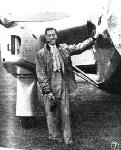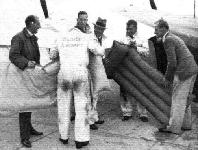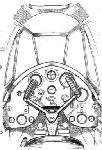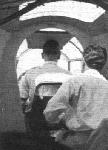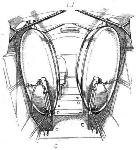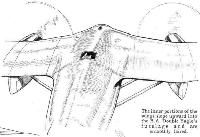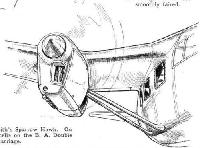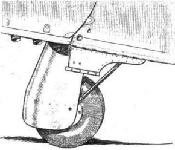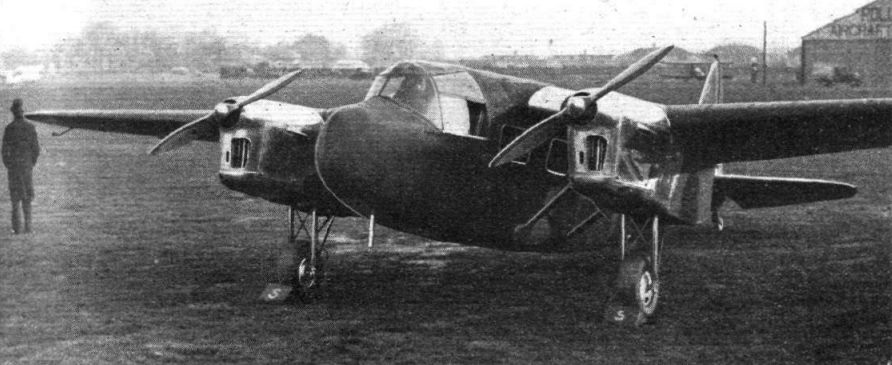
Фотографии
-
Flight 1936-04 / Flight
DUPLICATED: Latest of the British Aircraft Manufacturing Company's developments, the Double Eagle is eventually likely to be of considerable interest to the smaller air line or charter operator. The pilot has a very good view in all essential directions and, with the low-middle-wing arrangement, the passengers, too, will be able to take an interest in earthly matters. The engines are Gipsy Majors.
-
Flight 1936-09 / Flight
Регистрационный номер: G-AEIN [5] Although its Gipsy Sixes are not of the Series II type and it has fixed-pitch airscrews, Tommy Rose's B.A. Double Eagle is expected to give a very good account of itself.
-
Air-Britain Archive 1980-03
Регистрационный номер: G-AEIN [5] At Hatfield 9.7.36
Другие самолёты на фотографии: Miles Hawk / M.2 - Великобритания - 1932Percival Mew Gull - Великобритания - 1934
-
Flight 1936-09 / Flight
Регистрационный номер: G-AEIN [5] His mount: The B.A. Double Eagle (2 Gipsy Six) which Flt. Lt. Rose will fly.
-
Flight 1936-07 / Flight
Регистрационный номер: G-ADVV [2] Types of competing machines: B.A. Double Eagle
-
Flight 1936-05 / Flight
B.A. Double Eagle has an unusual wing arrangement which gives the passengers a good view downwards. Two Gipsy Major engines are used.
-
Air-Britain Archive 1980-02
Регистрационный номер: G-AEIN [5] One of the B.A. Double Eagles entered has Gipsy Sixes (Series I) and the other Gipsy Majors. The more powerful version should do 190 m.p.h.
Double Eagle G-AEIN had its original C of A Application dated 12.5.36 but by 13.5.41 only the airframe remained and this was impressed in July 1941 and used for instructional purposes. -
Flight 1936-07 / Flight
Регистрационный номер: G-ADVV [2] The new B.A. Double Eagle with two Gipsy Majors has a very unusual wing arrangement.
-
Flight 1936-07 / Flight
Регистрационный номер: G-AEIN [5] A pleasing "shot" of Flt. Lt. Wilson's Double Eagle coming in at Shoreham on Friday with the stately chapel of Lancing College in the background.
-
Flight 1938-07 / Flight
Morton, in the Double Eagle, approaches for one of his close looks at the Buntingford pylon. He finished fifth.
-
Flight 1937-07 / Flight
Регистрационный номер: ZS-AIY FOR AIR SURVEY: On Thursday of last week the B.A. Double Eagle, which has been specially laid out for survey work, left Hanworth for Johannesburg. It is being flown out by Mr. Brian Russell, the chief pilot of the Aircraft Operating Company of Africa.
-
Flight 1936-07 / Flight
KING'S CUP CAMEOS Caught by the Camera at Hatfield. A King's Cup veteran - Capt. W. L. Hope. (B.A. Double Eagle), unluckily eliminated by fuel-system trouble on Friday.
-
Flight 1936-10 / Flight
Mr. Jack Bagshaw encourages inflators of the Li-Lo mattresses carried on the Double Eagle.
-
Flight 1936-07 / Flight
B. A. Double Eagle. Cockpit and controls
-
Flight 1937-04 / Flight
This sketch of the interior of the "survey" Double Eagle not only shows the majority of the control and other details but also gives a good indication of the field of view provided for the pilot, whose seat is shown in skeleton form. The first nine of the key numbers below apply to the automatic pilot equipment.
(1) Main control and catch lever. (2) Coarse and fine directional adjustment controls. (3) Fore and aft control. (4) Lateral control. (5) Air-driven compressor brake lever. (6) Aileron pilot unit. (7) Oil reservoir. (8) Air drier. (9) Test cock. (10) Airscrew pitch controls (11) Undercarriage and flap controls, (12) Fore and aft trimmer. (13) Directional trimmer. (14) Drift sight control. (15) Heater controls. (16) Seat-raising lever. (17) Undercarriage and flap pump lever. (18) Brake lever. (19) Camera. (20) Heater grilles. -
Flight 1937-06 / Flight
Flt. Lt. J. B. Wilson (at the controls) and Mr. D. M. Bey (navigator) photographed in the B.A. Double Eagle as it crossed the Chilterns at 2,000ft. on the way to Speke.
-
Flight 1936-09 / Flight
Extra tankage arrangements in Flt. Lt. Tommy Rose's B.A. Double Eagle. The single passenger seat can also be seen.
-
Flight 1937-04 / Flight
A view through the rear bulkhead, looking towards the tail of the machine and showing the position of the rudder and elevator automatic pilot units and the battery, which is normally boxed in so that no fumes shall upset the operation of the automatic pilot units.
-
Flight 1936-07 / Flight
B. A. Double Eagle. Moving wing fillet on cabin door
-
Flight 1936-10 / Flight
The inner portions of the wings slope upward into the B.A. Double Eagle's fuselage and are smoothly faired.
-
Flight 1936-07 / Flight
The left-hand sketch reveals in detail certain of the features of the B.A. Double Eagle. To the right is a close-up of its retractable undercarriage.
-
Flight 1936-10 / Flight
A sketch showing the appearance of a nacelle on the B. A. Double Eagle, containing the retracted undercarriage.
-
Flight 1936-09 / Flight
Sketches showing at a glance the action of the retractable undercarriage on the Double Eagle to be flown by Tommy Rose
-
Flight 1937-09 / Flight
Details of the latest version of the B.A. Double Eagle's retractable undercarriage.











